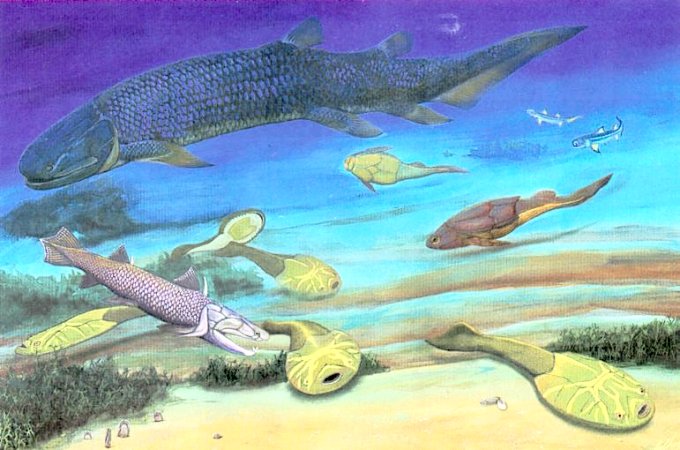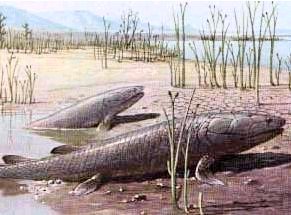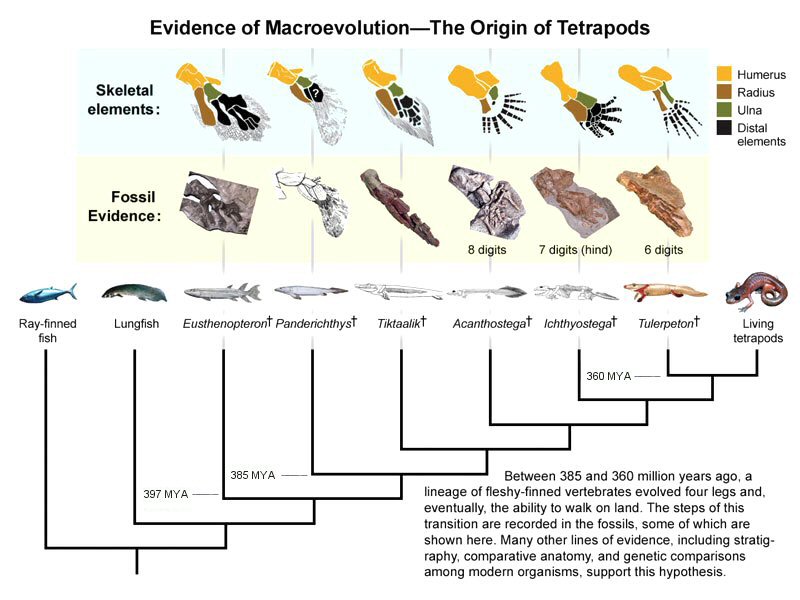 |
 |
developed. Holoptychius is one example, dipterus (a primitive lungfish) is another one that can breathe air. Figure 04b shows some of the fossilized Devonian fish from Yunnan, China. The one on upper left is the Youngolepis - a specimen in between the lobe-finned fish and the lungfish. Figure 04c summarizes the evolution of fish in a sequence from the jawless fish in the Cambrian, to the primitive jawed fish with amour in the Silurian, and finally advanced to bony fish in the Devonian. |
Figure 04b Devonian Fish [view large image] |
Figure 04c Evolution of Fish |
Figure 04d shows the evolution of jawed vertebrates with a phylogenetic tree. The node represents the split of species within a group. A crown group (clade or monophylum) consists both the extant and extinct species, while the stem group contains primitive relatives no longer in existence. The tree emphasizes the curious placement of the ostracoderms (a jawless fish) in company with
 |
 |
the jawed fish instead of with the modern jawless species such as the hagfishes and lampreys. It turns out that the ostracoderms fossils share many features similar to jawed vertebrates. They bear well-developed pectoral fins with associated girdles, a epicercal tail, and perichondral and cellular bone (see Figure 04e for the morphological specializations of Eusthenopteron - a jawed vertebrate in transition from aquatic to land dwelling). |
Figure 04d Jawed Vertebrates Phylogeny [view large image] |
Figure 04e Jawed Vertebrates Features [view large image] |
 |
|
Figure 04f Devonian Shark |












